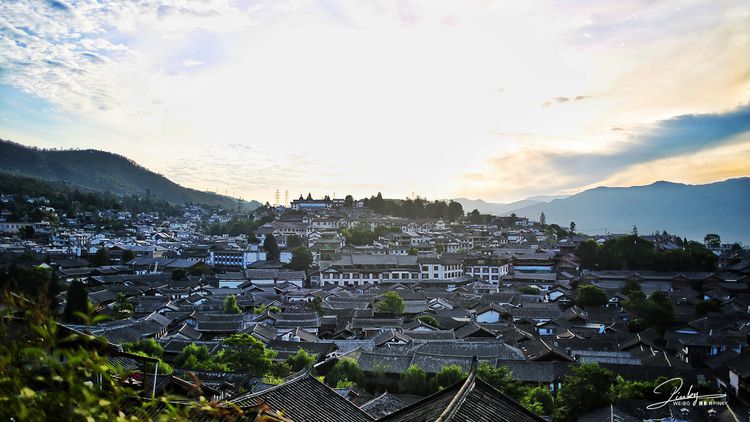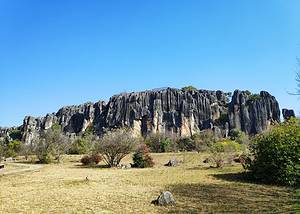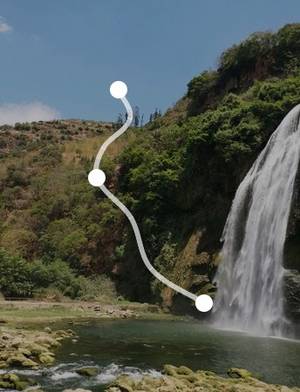Five-Day Tour of the Southwest Line
5 cities |
15 attraction(s) |
total distance 1159
km
 TIPS
TIPS
Day1
Day2
Day3
Day4
Day5
Day1: Kunming
3 attraction(s) ·
10 km
1
Dianchi Lake is one of China's national tourist and vacation resorts, located in Yunnan province. It is the largest freshwater lake in Yunnan, with charming scenery and adjacent to Daguan Park, facing Xishan Forest Park and Yunnan Ethnic Village across the water. Visitors can take a stroll along the east bank or take a boat tour, and in winter they can feed the red-billed gull. In addition, tourists can also stop by Yunnan Ethnic Village on the way to experience the customs of Yunnan's many ethnic groups.
1
km
2
In Yunnan Nationalities Village, you can appreciate many natural village-style residential buildings, and the garden landscapes and green trees in this park are very compatible. There are 25 ethnic minority villages for tourists to visit, including Dai, Bai, Yi, and Jingpo, each with its unique customs and craft performances. Particularly the Dai village and Yi village are worth visiting, where the Yi's Earth Tower buildings, roasted wine workshop, and cultural buildings are also very attractive. During ethnic festivals such as the Water Splashing Festival and Torch Festival, the entire scenic area becomes very lively, and as a tourist, it is worth visiting during these times.
9
km
3
Jinma Biji Fang was first built during the Ming Dynasty in the XuanDe period. The current gate was rebuilt in 1998 on its original site according to the style at that time. Jinma Fang is located on the east side near Jinma Mountain, while Biji Fang is on the west side near Biji Mountain. As one of the iconic buildings in Kunming, Jinma Biji Fang is often used by tourists as a landmark for taking pictures. In addition, the streets around here have lively night markets until late at night, where you can browse various vendors and choose products you like.
Day2: Dali
3 attraction(s) ·
24 km
1
One of the four famous scenic spots in Dali is the Erhai Lake, which looks like an ear and is a plateau lake formed by the collapse of the West Erhai River. Erhai Lake has three islands, four and a half peninsulas, five lakes, and nine winding waterways. The lake water is clear and transparent, known as the "flawless jade surrounded by mountains." The local dwellings along the lake, such as Shuanglang, Caicun, and Xizhou, are popular tourist attractions. Shuanglang is even known as the "divine light of Erhai," Caicun was a filming location for the movie "Butterfly Lovers," and Xizhou is known for its Bai ethnic architecture.
22
km
2
Dali Ancient City is located at the foot of Cang Mountain and was the capital of the ancient Nanzhao and Dali Kingdoms. The streets in the city are arranged in a chessboard pattern, becoming the center of Dali tourism. The climate in Dali is clear in the lunar months of March and April, making it the best time to enjoy the scenery and experience local customs. Here, tourists can enjoy a leisurely and trendy slow lifestyle, taking care of flowers, playing with cats and dogs, strolling through small shops, and hanging out with friends in bars.
3
km
3
Day3: Lijiang
3 attraction(s) ·
54 km
1
This town is one of the most popular on the Tea Horse Ancient Road, with a history of 800-900 years. The ancient town has beautiful wooden buildings with green tiles, old streets and alleys, and small flowing bridges. Looking up from the East Street of the ancient town, you can see the Yulong Snow Mountain in the distance, with endless beautiful scenery.
Lijiang Ancient Town is one of the two ancient towns in China that have successfully applied for World Cultural Heritage as a whole city. It is a typical representative of distinctive characteristics and styles of Chinese dwellings. In the Southern Song Dynasty, Lijiang Ancient Town began to take shape, and in the Ming Dynasty it was called "Dayan Xiang" because it was located in the center of Lijiang Dam, surrounded by green waters and mountains, like a piece of jade inkstone, hence the name.
Many TV dramas such as "One Meter Sunshine" and "Mu Mansion Turmoil" have been filmed here.
30
km
2
The sacred mountain in the mind of the Naxi people is the Snow Mountain, with the main peak Fanzi Steep reaching a height of about 5596 meters. The Snow Mountain is shrouded in clouds and mist all year round, and it's an unconquered virgin peak. The Snow Mountain is composed of 12 beautiful and spectacular snow peaks, and the natural landscapes are rich and diverse, including glaciers, alpine meadows, primitive forests and snowy areas. Rhododendrons bloom in different heights according to the season, forming the most charming scenery of the Snow Mountain. Tourist attractions include Yushui Village, Glacier Park, and Blue Moon Valley, and in addition, the Blue Moon Valley Square hosts a large-scale live performance called "Impression Lijiang".
24
km
3
This small town is located in the northwest of the Lijiang Old Town, surrounded by mountains and with a gentle flow of water. Compared with Dayan Ancient Town, it is more peaceful and quaint. The town is close to the Jade Dragon Snow Mountain, with rolling mountains, verdant trees, and beautiful scenery. There are ancient buildings such as the Dashi Bridge and Dajue Palace, which are well-preserved and have murals depicting characters and images from Buddhism. As an important part of the World Cultural Heritage site of Lijiang Old Town, it was named as a CCTV "China Charming Town" in 2005.
Day4: Deqen
3 attraction(s) ·
27 km
1
Located in the core area of the Great Shangri-La Scenic Area, it is a key part of the World Natural Heritage "Three Parallel Rivers". Its main body is formed by geographical features such as Qicui Lake, Shudu Lake, and Mila Mountain Grassland, and it is the undisputed star of Shangri-La tourism. Its unique geological features, lakes and wetlands, grasslands and forests, rivers and canyons, rare plants and animals, and other natural treasures are not only perfectly protected but also showcase the authentic natural environment to visitors. Photographers consider Pudacuo to be an excellent shooting location, especially during spring and autumn when the scenery is extremely beautiful, making it the preferred season for tourists to visit or take photos at Pudacuo.
21
km
2
The Sanga Monastery is built on a mountain, with a distant view resembling the Potala Palace. It has a grand scale, and is therefore known as the "Little Potala Palace". Surrounding the Sanga Monastery is an elliptical city wall, with the highest point in the center, and two main halls, the Zhangcang and Jigang. Not only is the architecture exquisite, but the monastery also houses many religious artifacts and precious cultural relics, earning it the title of "Tibetan Art Museum".
7
km
3
The architectural layout of this ancient city presents an eight-petal lotus shape, with a spacious Moonlight Square at the center. The quaint Tibetan wooden houses surround the square, forming the best-preserved and largest cluster of Tibetan houses, as well as an important hub of the Tea-Horse Ancient Road. This was once an important window for cultural exchange between the Tibetan and Yunnan ethnic groups, as well as a link for economic and trade activities in the Sichuan-Tibet-Yunnan region.
Day5: Chengdu
3 attraction(s) ·
3 km
1
Chengdu has large-scale ancient streets from the Qing Dynasty, consisting of Kuanzhai Alley, Narrow Alley, and Jing Alley. Kuanzhai Alley has preserved the most complete old buildings, where tourists can enjoy tea and authentic Sichuan cuisine, and experience the local culture of old Chengdu. Narrow Alley is a leisure and lifestyle area integrating architecture from the late Qing Dynasty and early Western-style buildings, mainly featuring Western dining culture and artistic leisure. Jing Alley is a typical representation of folk Chengdu, with beautiful cultural brick walls, Chengdu-style snacks, folk toys, and more, allowing visitors to feel the rich cultural atmosphere of Chengdu.
3
km
2
Jinli is one of the most popular attractions in Chengdu, a commercial street with antique style, and also a part of the Chengdu Wuhou Memorial Temple Museum. Here, you can not only appreciate the superb craftsmanship of clay figurines and sugar paintings, but also experience the rich Three Kingdoms culture. In addition, Jinli also gathers various Sichuan-style snacks, with a wealth of choices such as tea houses, cafes, bars and inns, allowing you to fully enjoy the delicacies. At night, Jinli lights up with different lights, creating a unique atmosphere, which is very suitable for taking pictures and visiting.
1
km
3
The Chancellor of Shu Kingdom, Zhuge Liang, is the object of commemoration at this museum, which was incorporated into the Han Zhao Lie Temple in the early Ming Dynasty and is now one of the National Museums of the Three Kingdoms Heritage. It consists of three parts: the Hui Ling, Han Zhao Lie Temple, and Wu Hou Shrine, showcasing 50 statues of Shu Han heroes, including Liu Bei and Zhuge Liang. Visitors will follow the north-south axis to visit the buildings in order, including the Wu Gate, Second Gate, Liu Bei Hall, Passage Hall, Zhuge Liang Hall, and Three Yi Temple.

































